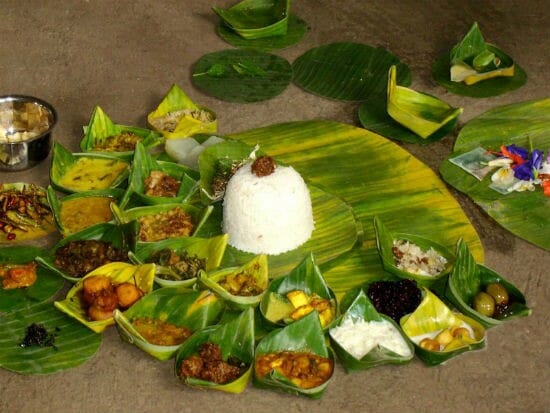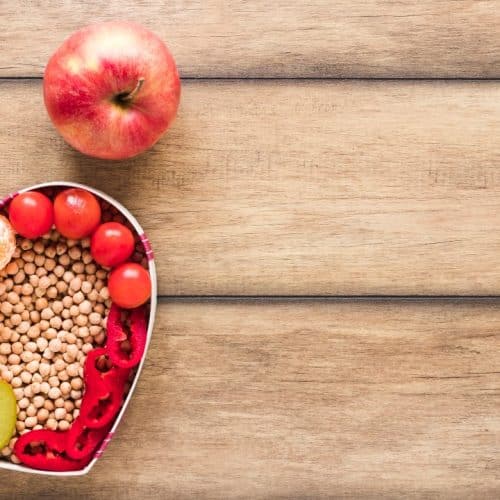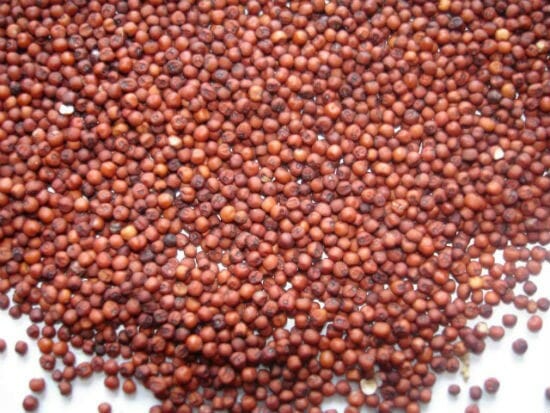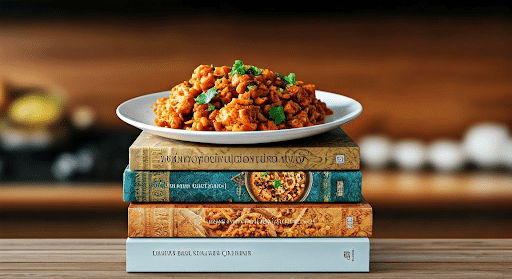Dive into an adventure of taste, flavour, and tradition that spans thousands of years and crosses thousands of miles. With each region offering its unique signature dishes, Indian cuisine or Indian food culture is a vast culinary treasure to explore.
From the rich, buttery flavours of the North to the hot and spicy sensations of South India, the sweets of the East to the flavorful curries of the West, Indian cuisine has the magical ability to tantalise your taste buds while satisfying your appetite. Indian cuisine has charmed people outside of India, making it the ambassador of Indian culture globally.
This blog aims to take you on a journey to discover the fascinating richness and variety of Indian food culture around the world, its humble beginnings, its evolution over time, its significant regional distinctiveness, and the impact of external influences on it, including the role of food history in the Indian subcontinent.
Indian Food Origin and Roots
To understand Indian cuisine, it’s crucial to look at its origin and roots. A significant aspect of Indian Cooking is rooted in the civilisation around 3000 BC — the Harappan or Indus Valley Civilization. The earliest Indians were an ingenious lot, with a rich knowledge of gram flour use, dairy products like yoghurt and ghee, and meat dishes. Fast-forwarding to modern cuisine, many factors have influenced the vibrant Indian culinary scene – from overseas invasions and colonisations to internal regional variety and spice trade.
The Influence of Ancient Culture
Looking at ancient Indian culture, one can see that food and diet were considered vital not just for sustenance but also for achieving a spiritual and balanced life. The foundations of what we now know as Indian cuisine were laid during the times of ancient empires, with a focus on using seasonal ingredients such as mangoes, local greens, pumpkins, and root vegetables.
They embraced a philosophy that promoted respect for nature and all its bounties, including using banana leaves to serve food. This virtue was captured in the ancient practice of Ayurveda, which categorised food into sattvic (pure), rajasic (stimulative), and tamasic (inert) foods designed to balance the body, mind, and spirit.
Understanding food’s medicinal properties established a deep bond between eating and living a healthy lifestyle.
The ancient scriptures of the Vedas and Upanishads also influence today’s Indian food customs. For instance, the ‘Yajna’ or fire sacrifice rituals involved the use of ghee (clarified butter), which is recognized even today as a sacred item in Indian food culture. The diversity and complexity of Indian cuisine grew alongside the evolution of Indian civilisation, with different eras bringing in new flavours and cooking techniques.
During the Mauryan Empire (4th–2nd century BCE), vegetarianism gained prominence owing to Emperor Ashoka’s pro-Buddhist policies, which advocated for non-violence, including towards animals.
On the other hand, the Mughal Empire, which ruled India from the 16th to the 19th century, introduced Persian and Central Asian culinary techniques and ingredients, such as saffron, into Indian cuisine. This influence of Mughlai cuisine can still be seen in rich, meaty delicacies, biryanis, kebabs, and pilafs, which are now staples in North Indian meals. Meanwhile, with their bounty of seafood, the coastal regions created a culinary tradition of their own, using coconut milk, rice, and a spectrum of spices to create dishes that tantalise the palate.
Each evolutionary stride has added to India’s culinary repertoire, making it a rich melting pot of flavours, techniques, and textures, including various vegetarian dishes.
The Role of Spices in Indian Cuisine
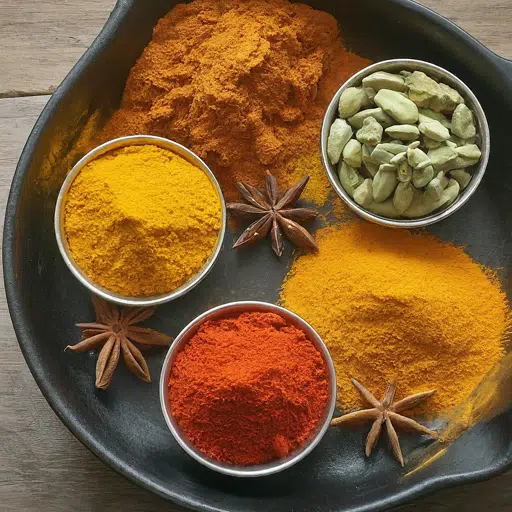
Indian spices in plate
Spices, or the ‘soul of Indian cuisine’, as they are often revered, play a pivotal role in defining this food culture. With a history as old as human civilisation, spices have been intertwined with Indian cooking for thousands of years. Indian soil has many potent flavour powerhouses, from hot chilli and black peppercorn to fragrant cardamom and cloves.
What truly stands apart about Indian cuisine is the formidable art of using spices. Apart from enhancing the flavour and aroma, spices possess medicinal properties that balance different bodily functions, marking their centrality in Ayurveda, an alternative therapy deeply rooted in Indian culinary tradition. Thus, Indian spices go well beyond just adding flavour to dishes.
The Western coastal areas, being traditional spice trade routes, use spices like coriander and cumin extensively.
The northern region is famous for its garam masala, a warm blend of spices including cardamom, clove, and black pepper. At the same time, the South is known for sambar powder, a mix of lentils and spices. Similarly, eastern India uses panch phoran, or a blend of five spices – fenugreek, nigella, cumin, radiant, and fennel- and curry leaves and poppy seeds for added flavour.
Interestingly, the exploration of the Indian spice trade opened up new sea routes, marking a significant period during the European Age of Discovery. Many voyages, including those of Vasco da Gama and Christopher Columbus, were undertaken to find sea routes to India, which underscored the global relevance of Indian spices.
Regional Indian Food Culture
As diverse as the country’s landscape, India’s regional food cultures bear an impressive variety. Every state and every corner of India has a unique culinary story woven into its fabric, bursting forth in their local delicacies.
From the robust, hearty flavours of North Indian Cuisine to the light, aromatic delights of South Indian Cuisine, an enchanting universe of tastes and aromas is waiting to be discovered. The cuisine balances creatively around locally sourced ingredients, creating a saga of decadent gastronomic delights with different cooking styles.
Let’s embark on a virtual tour through these regional cuisines, including the distinct flavours of southern India.
North Indian Cuisine
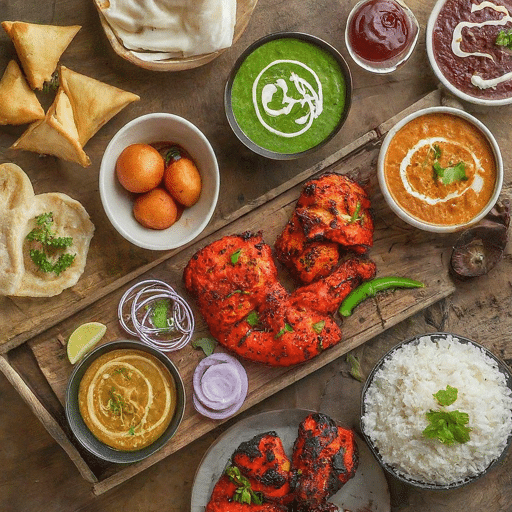
North indian cuisine
North Indian cuisine is distinct for its heavier, often cream-based dishes, succulent meats, and generous use of spices and herbs like garam masala, black pepper, and mustard oil. This part of India is known for its tandoor-cooked dishes and thick gravies.
Key dishes include:
- Butter Chicken: Creamy, spiced chicken dish that melts in your mouth.
- Dal Makhani: Slow-cooked lentils in a creamy, butter gravy.
- Biryani: A heavenly rice dish cooked with aromatic spices and meat.
- Tandoori Chicken: Chicken marinated with spices and yoghurt, then cooked in a tandoor.
- Rogan Josh: A rich, spicy lamb curry hailing from Kashmir.
Another notable aspect is their bread culture. Be it the soft, leavened Naan or the crispy, flaky Paratha, the variety of bread complements the variety of dishes. Generally, North Indian meals balance proteins, carbohydrates, and fibre, thus providing a wholesome, satisfying experience.
South Indian Cuisine
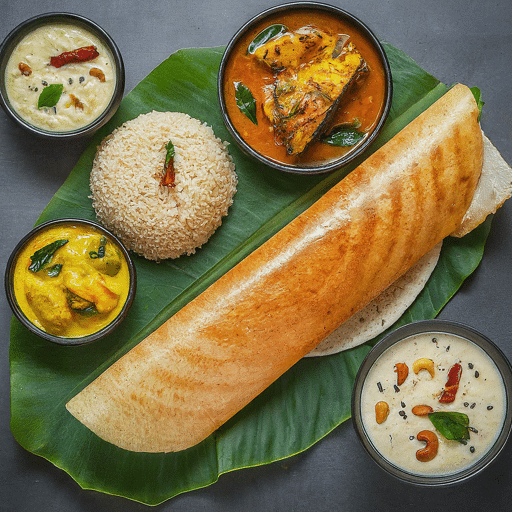
South indian cuisine
Known for its light, aromatic, and nutritious offerings, South Indian food is a flavorful mix of rice, lentils, and regional vegetables.
Coconut is a crucial ingredient in forms like oil, milk, and grated. In fact, in South Indian cuisine, coconut oil is the most commonly used oil for cooking and frying because it is widely available in coastal areas. The cuisine uses a delightful burst of spices, and tamarind prominently lends a sour taste.
One of the most popular dishes in South Indian cuisine is Pongal, a staple meal during every auspicious festival in Tamil Nadu. In addition to rice and sweet milk, the dish is cooked with ingredients like cardamom, green gram, raisins, and cashew nuts. Apong, a rice beer made from fermented rice or millet, is a popular beverage in Arunachal Pradesh and is often consumed as a refreshing drink with South Indian dishes.
Some must-try dishes are:
- Dosa: A thin, crispy pancake made from fermented rice and urad lentil batter.
- Idli: Fluffy, steamed cake made from fermented rice and urad lentil.
- Sambar: A tangy lentil broth with vegetables, often served with idli, dosa, or rice.
- Rasam: A spicy-sour soup usually served with rice or drunk as soup.
- Puliogare: Spiced, tangy tamarind rice with peanuts.
With cooking techniques that retain the nutritional value of the ingredients, it’s no wonder that this cuisine is considered one of the healthiest in the world.
Also Read: North Indian Food vs South Indian Food
East Indian Cuisine
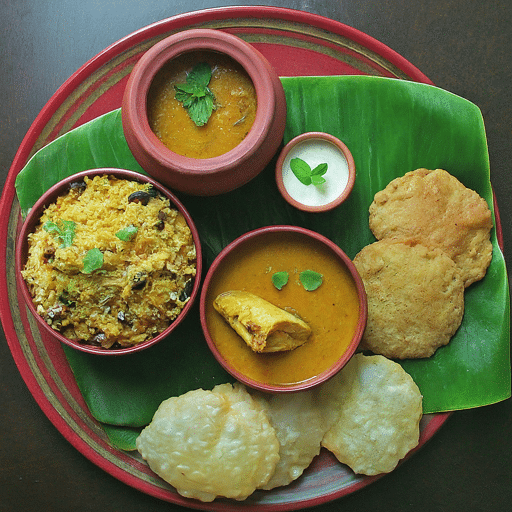
East indian cuisine
With its extensive coastlines and fertile plains, Eastern India offers a culinary delight marked by delicate flavours and subtle spice use. Fish and rice are dietary staples; mustard oil adds a distinct flavour to their dishes.
Essential East Indian dishes encompass:
- Fish Curry: Made with freshwater fish and available in numerous variations.
- Macher Jhol: A spicy fish curry, usually served with rice.
- Pakhala: Fermented rice served with fish and vegetables, famous in Odisha.
- Pitha: Rice cakes stuffed with sweet or savoury fillings.
- Biryani: Particularly in Kolkata, Biryani, which has meat and potatoes, is quite renowned.
Sweet dishes are also celebrated in this region, resulting in an exciting variety of desserts like Rasgulla, Sandesh, and Mishti Doi.
West Indian Cuisine
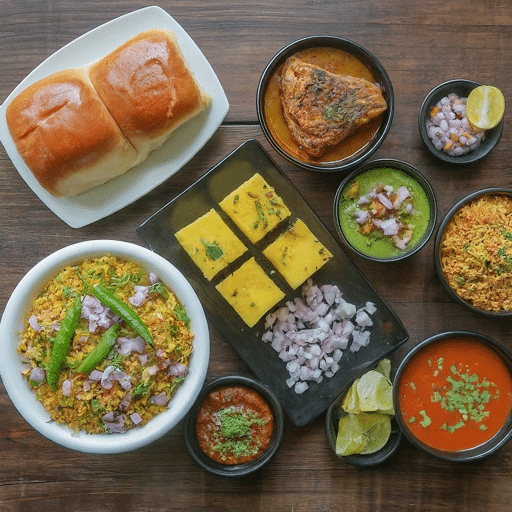
West Indian Cuisine
Western India presents a culinary tapestry as diverse as its geography. From Rajasthan’s spicy curries to Gujarat’s sweet-edged savouries and Goa’s seafood delights, West Indian cuisine caters to all taste buds.
Remarkable West Indian dishes include:
- Dhokla: Steamed chickpea cakes from Gujarat.
- Pav Bhaji: A mashed vegetable curry served with buttered bread buns, famous in Maharashtra.
- Goan Fish Curry: A hot and tangy fish curry made with coconut milk in Goa.
- Dal Baati: A popular Rajasthani dish of hard wheat rolls served with spiced lentils.
- Misal Pav: A spicy curry served with bread, a signature dish of Maharashtra.
The region also offers a rich variety of street food, with Vada Pav and Pani Puri being notable examples.
How Indian Food Culture Travelled Abroad?
Indian food culture reached international borders mainly due to migration and colonisation. Whether it was the Indian diaspora setting up homes abroad or the British colonial era, when Indian ingredients and flavours were introduced in Britain, the international landscape became a canvas for Indian Food.
Intricate flavours, colourful presentations, and unique textures played a major role in gaining global attention. Now, let’s dive deeper into how these influences marked a significant presence of Indian cuisines outside India.
Indian Immigrants’ Influence
The saga of Indian food culture’s travel abroad started, in large part, due to the Indian diaspora. As Indians migrated for job opportunities, studies, or business prospects, they carried along their food culture, which gradually began to influence the local cuisines of their host countries. Indian restaurants and spice markets soon started sprouting internationally, catering primarily to the immigrant population initially but subtly seeping into the mainstream palate.
This is particularly apparent in places like the UK and the US, where Indian food has emerged as a significant culinary phenomenon. Today, one can easily find an Indian restaurant serving North Indian and South Indian food or giving a modern twist to traditional dishes in these countries. Moreover, it’s common to find supermarkets shelved with Indian spice blends, sauces like curry paste, ready-made mixes, and other condiments, catering to the demand for authenticity and showcasing the traditional cooking methods used in Indian cuisine.
The influence also extends to home kitchens, where people experiment with Indian recipes and ingredients. Thanks to the evolving culinary landscape, Indian dishes like samosas, curries, biryanis, and tandoori chicken have found a place in the global culinary lexicon.
British Colonisation and Indian Food Culture
Apart from migration, another influential factor behind the globalisation of Indian Food Culture was the era of British Colonial rule. When the British left India, they carried back Indian recipes, ingredients, and a fondness for “curry” – a broad term they used for spiced, sauced Indian dishes.
This translated into a rise in ‘curry houses’ in Britain. Initially, these catering services were set up by Bengali migrants to meet the growing demand for Indian food amongst the British. Gradually, however, they started modifying their offerings to suit local tastes and preferences.
Today, classics like chicken tikka masala and butter chicken, originating in Northern India, are more British than Indian. Such dishes often served with naan bread or rice, have become so integrated into the UK culinary scene that Chicken Tikka Masala is oft-cited as one of Britain’s national dishes!
The influence didn’t stop at Britain’s borders either. Former British colonies, such as South Africa and Australia, also saw Indian influences on their food culture. For instance, Durban in South Africa is famous for its unique “Bunny Chow” – a scoop and half-bread loaf filled with curry, a testament to Indian influence.
Read: How Did The British Influence Indian Cuisine
Indian Food Scene Around the World
Indian cuisine’s vibrancy and versatility have found an appreciative audience worldwide.
Be it the Middle East, South East Asia, Europe, America, or even the Pacific, Indian food culture has etched its presence. Across continents, Indian restaurants have cropped up, dishing out Indian fare, both authentic and fusion. The ever-evolving culinary world scene sees food experiments where global cuisines are reimagined with an Indian twist, indicating the Indian food scene’s thriving influence worldwide.
Indian Restaurants Abroad
The rise in popularity of Indian food has led to the opening of numerous Indian restaurants across the globe, particularly in South Asia. These restaurants serve everything from regional Indian delicacies to popular street foods and fusion cuisine. From cosy eateries serving home-style thalis to upscale restaurants offering gourmet Indian dishes, the landscape of Indian restaurants abroad is as diverse as the cuisine itself. Let’s explore some of the most famous traditional Indian food options at these famed restaurants:
| Restaurant Name | Location | Speciality |
| Dishoom | London, UK | Bombay-style cafe serving comfort food |
| Gaggan | Bangkok, Thailand | Progressive Indian cuisine ranked among the World’s 50 Best Restaurants |
| Indian Accent | New York, USA | Innovative Indian dishes with global twists |
| Darbaar | London, UK | Royal Indian feast with Chef Abdul Yasseen |
| Rasam | Dublin, Ireland | Known for intensely flavoured and perfectly spiced dishes |
No matter where they are, these restaurants serve as gastronomy ambassadors, keeping the essence of Indian cuisine alive and adding to the global culinary narrative.
Fusion Cuisine Inspired by Indian Food
Indian cuisine’s quintessential flavours and techniques have inspired numerous fusion cuisines around the globe. From Indian-style burgers in the United States to Indianized pasta in Italy or Indian tacos in Mexico, these experiments combine the best of both cultures, creating exciting and flavoursome fusion foods. For instance, the Chicken Tikka Masala pizza, where spicy pieces of chicken tikka masala replace the conventional tomato sauce and toppings or currywurst in Germany, a fried sausage served with spicy curry ketchup.
The rush to find unique, flavorful experiences has recently fueled these innovations. Many international chefs have embraced the challenge of bringing unexpected twists to their traditional dishes with a touch of Indian spice. This has enriched their local food scenes and paved the way for an explosion of culinary creativity inspired by modern Indian cuisine.
Indian Street Foods’ International Popularity
Indian street food has always been the heart of the country’s food culture, offering a bounty of flavours at every corner. Its charm has travelled overseas, gaining popularity for its lip-smacking taste and pocket-friendly prices. Whether it’s the tangy Pani Puri, comforting Samosas from Central Asia, tantalising Tandoori meals, or the staple food of Makki di Roti and Sarson da Saag from Punjab, Indian street food has captivated taste buds globally, becoming a beloved part of numerous food markets, festivals, and fast-food menus in North India and around the world.
Pani Puri, Samosa and Chaats
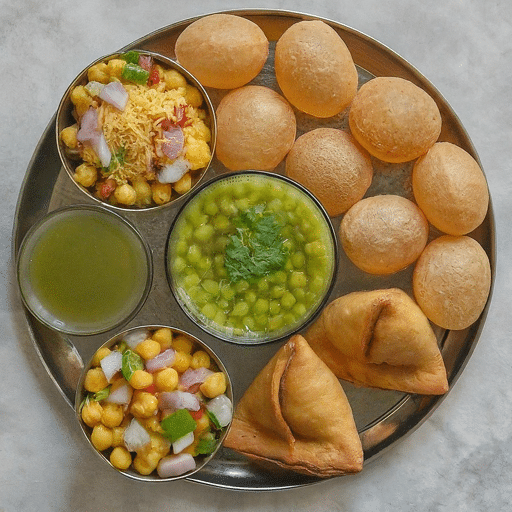
Pani Puri Samosa and Chaats
Pani Puri, also known as Gol Gappa or Puchka, is one of India’s most famous street foods. It’s a mouthful of explosive flavours – a hollow, crispy fried puri filled with tamarind water, chickpeas, and tangy sauces. It’s difficult to find someone who doesn’t fall for their temptation. It won’t be surprising to spot stalls selling Pani Puris, as well as other popular dishes like Vada Pav, Samosas, and Indian breads such as roti and parathas, in international food markets or Indian-themed events.
Samosa, the golden deep-fried triangular pastry filled with a spicy mixture of potatoes, peas, and occasionally meat, is another iconic Indian street food. It has managed to carve its niche worldwide, appearing in supermarket frozen aisles to fancy party menus.
Chaats are a category in themselves. Dishes like Bhel Puri, a mix of puff rice, onion, potatoes, and tangy tamarind sauce, or Dahi Puri stuffed with sweet yoghurt and chutneys, offer a blast of flavour and become instant hits wherever they go.
Biryani, Butter Chicken, and Tandoori Meals
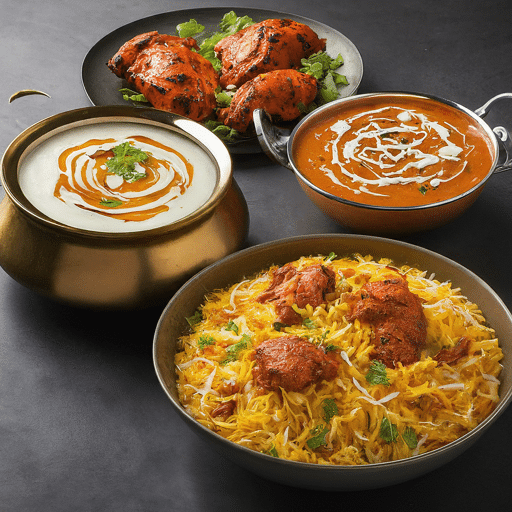
Biryani Butter Chicken and Tandoori Meals
Taking a step further, let’s dive into Indian meals that have crossed borders. Biryani, a fragrant rice dish cooked with various spices and marinated meat or vegetables, offers a sensory experience that’s hard to match. The dish has many regional variations in India, translated overseas, making Biryani a globally recognised Indian dish.
Butter Chicken, a dish of tandoor-cooked chicken pieces in a creamy tomato sauce, is a favourite at Indian restaurants abroad. It’s often served with Naan bread, giving foreign palates a taste of North Indian richness.
Furthermore, the allure of tandoori chicken, marinated in yoghurt and spices and then cooked in a tandoor (clay oven), has also reached across continents, often standing as the poster child of Indian non-vegetarian cuisine.
The spice-infused, flavorful profiles of these dishes genuinely encapsulate the essence of Indian cuisine, winning hearts around the globe.
Finding Indian Food Culture in Global Supermarkets
The surge in popularity of Indian food culture is now unmistakable in global supermarkets. The availability of Indian ingredients has increased over time. From Indian spice blends to ready-to-cook meal kits, Indian food products have secured their space on retail shelves abroad.
Further, the wide range of Indian packaged snacks and desserts has won global consumers’ love, adding a flavour of Indian authentic taste to their regular shopping lists.
Indian Spice Blends
Indian spice blends or masalas have found their place on supermarket shelves worldwide. Key ingredients in the Indian kitchen, like turmeric, cumin, coriander, garam masala, and curry powders, are now readily available globally. International chefs and home cooks alike now have easy access to these authentic Indian spices, enabling them to recreate the intricate flavours of Indian cuisine in their kitchens.
Premixed spice blends like Chicken Masala, Biryani Masala, and Tandoori Masala are gaining popularity amongst those who want to delve into Indian cooking without the hassle of creating these blends from scratch.
These aromatic spices, the main ingredients in Indian dishes, are more than just seasonings; they are a gateway to exploring Indian gastronomy’s fascinating labyrinth for the world.
Packaged Indian Snacks and Desserts
Walk into any international supermarket, and it’s commonplace to spot shelves loaded with popular Indian snacks and desserts. From savoury treats like Bhujia Sev, Murukku, Masala Chana, and Khakhra to sugary delights like Gulab Jamun, Jalebi, and Sohan Papdi, the world has taken a fancy to these Indian delicacies.
The crunch of savoury snacks or sweet, melt-in-your-mouth desserts offers a captivating insight into Indian flavours, resonating with global taste buds. For Indians living abroad, these treats are nostalgic remnants of their homeland. In contrast, for others, they are exciting new ventures in flavour.
One famous Indian dessert that has gained popularity worldwide is Indian ice cream, commonly known as kulfi. This frozen treat, originating from Delhi, is made with a mixture of condensed milk, nuts, and spices, giving it a unique and delicious flavour. This trend reflects the increasing acceptance and popularity of Indian food culture globally.
Conclusion
Through the eras, across continents, Indian food culture has shown its dynamism and adaptability. This blog post narrated how it all started from the ages-old Indian civilisation, the impact of external influences, the rich regional diversity, and how beautifully this cuisine has been embraced worldwide. Even as fusion trends remodel traditional recipes and street foods turn into global staples, the essence of Indian food culture continues untouched. Indian cuisine’s classics, the spicy curries, aromatic biryanis, warm bread, and sweet endings, remain a culinary constant even in their new avatars abroad. With Indian spices lining international supermarket shelves, Indian restaurants becoming crowd-pullers, and Indian recipe remodelling, Indian food culture has undoubtedly arrived on the global gastronomy scene. As we continue to celebrate and explore Indian cuisine in its full glory, it’ll continue to evolve, thrive, and inspire culinary journeys, making a gastronomic impact around the globe.
Frequently Asked Questions
What Influences the Taste of Indian Dishes Across the World?
The use of spices primarily influences the taste of Indian dishes worldwide. The unique combinations and proportions of spices used in Indian cuisine impart distinct flavours contributing to the dishes’ popularity. Regional variations and adaptations to the local palate also influence the taste.
How to Cook Authentic Indian Food at Home?
Cooking authentic Indian food at home involves using traditional ingredients like spices, lentils, and certain vegetables. It’s beneficial to follow recipes and understand each ingredient’s role in creating distinctive flavours. Gradually, one learns to balance the spices and flavours, the key to Indian cooking.
Which Indian Street Foods Are Most Popular?
Among the myriad Indian street foods, pani puri, Samosa, and Chaat are widely popular. Biryani, a fragrant rice dish, and Tandoori Chicken cooked in a clay oven have a vast fan base internationally. Dosa, Idli, and Vada are other cherished delicacies that are gaining recognition globally.
Which countries have the highest influence on Indian food culture?
Countries with prominent Indian diaspora, such as the United States, the United Kingdom, Canada, and Australia, highly influence Indian food culture. Moreover, regions like the Middle East and Southeast Asia show significant impacts due to their historical connections and proximity to India.







